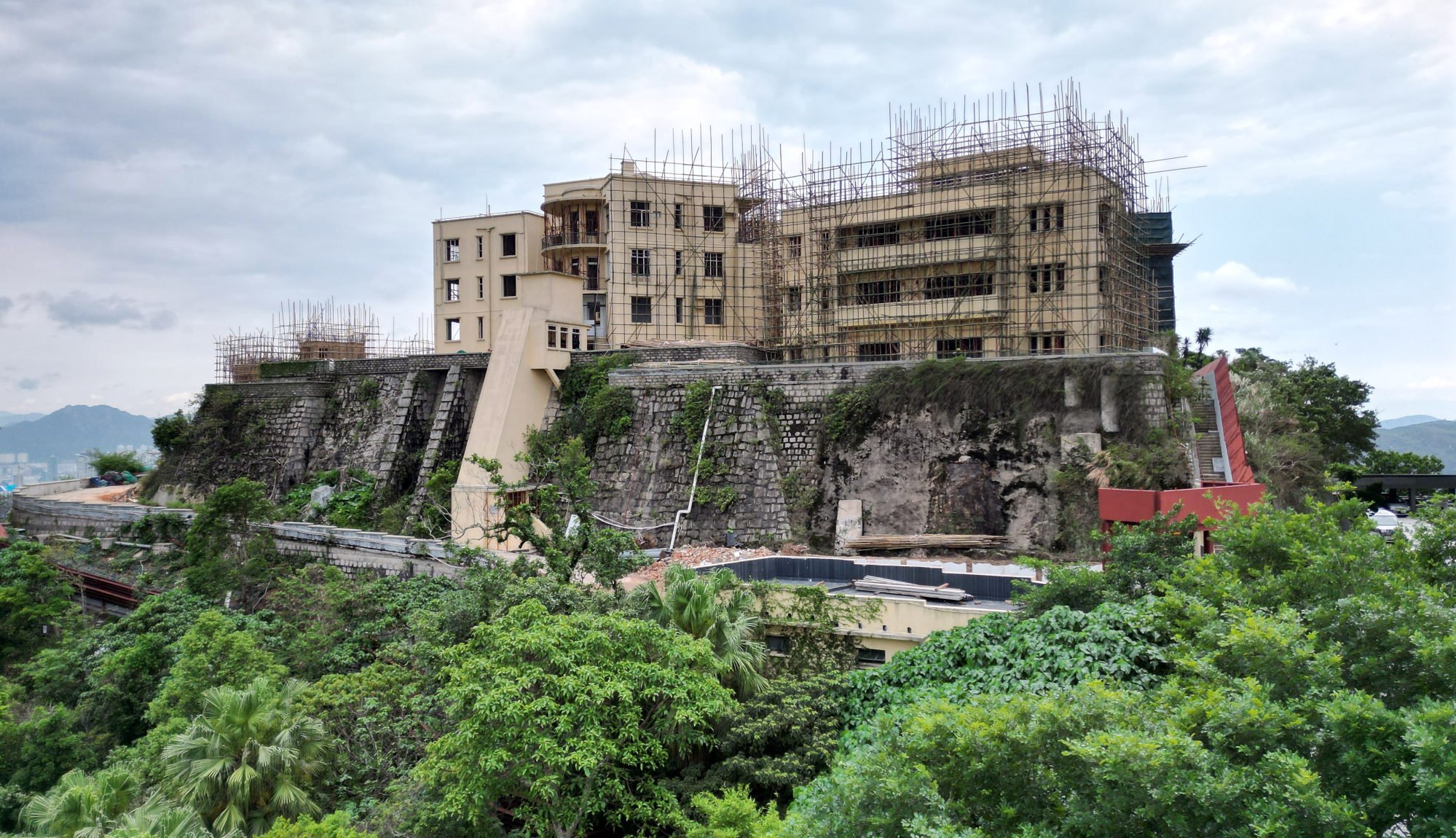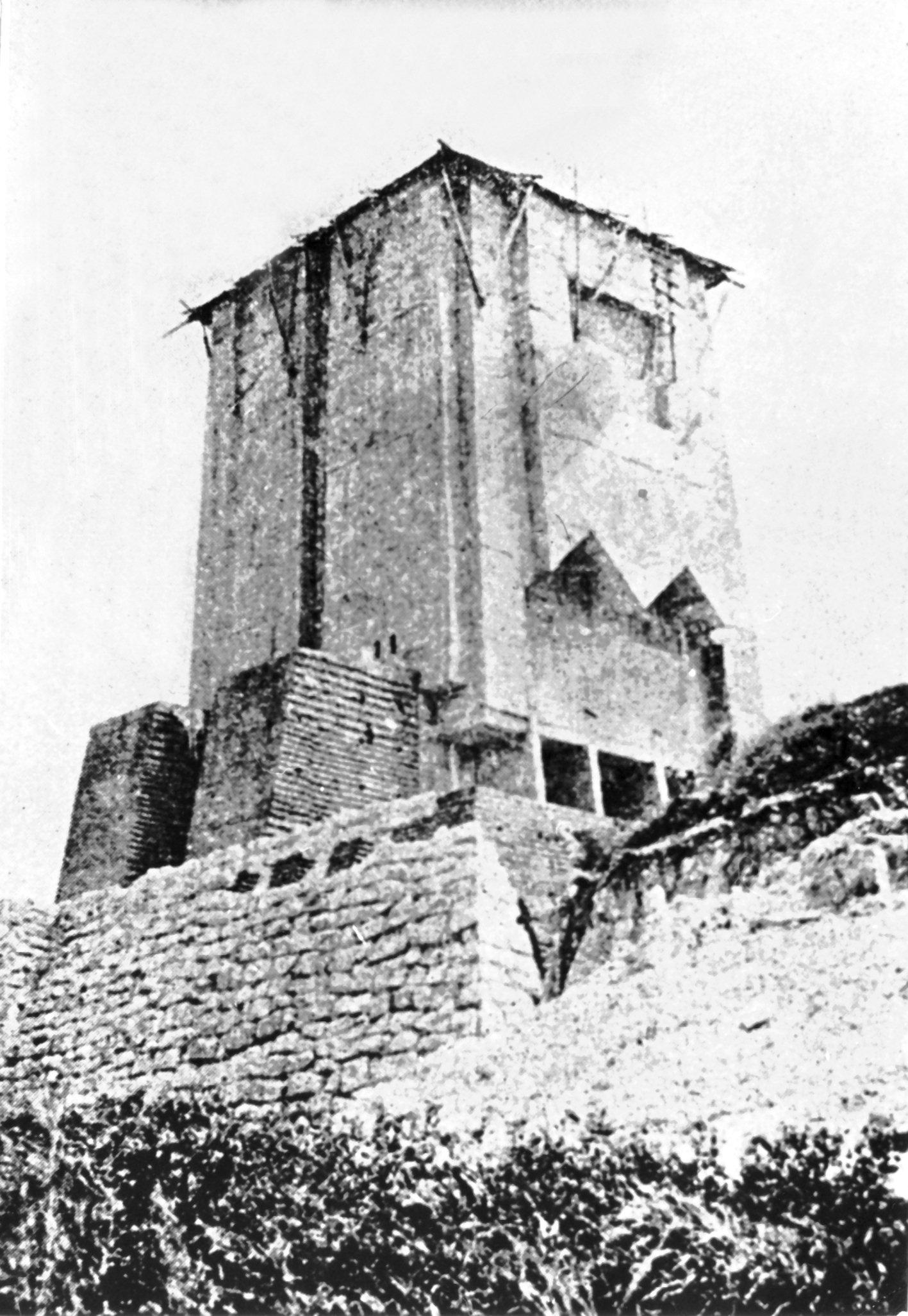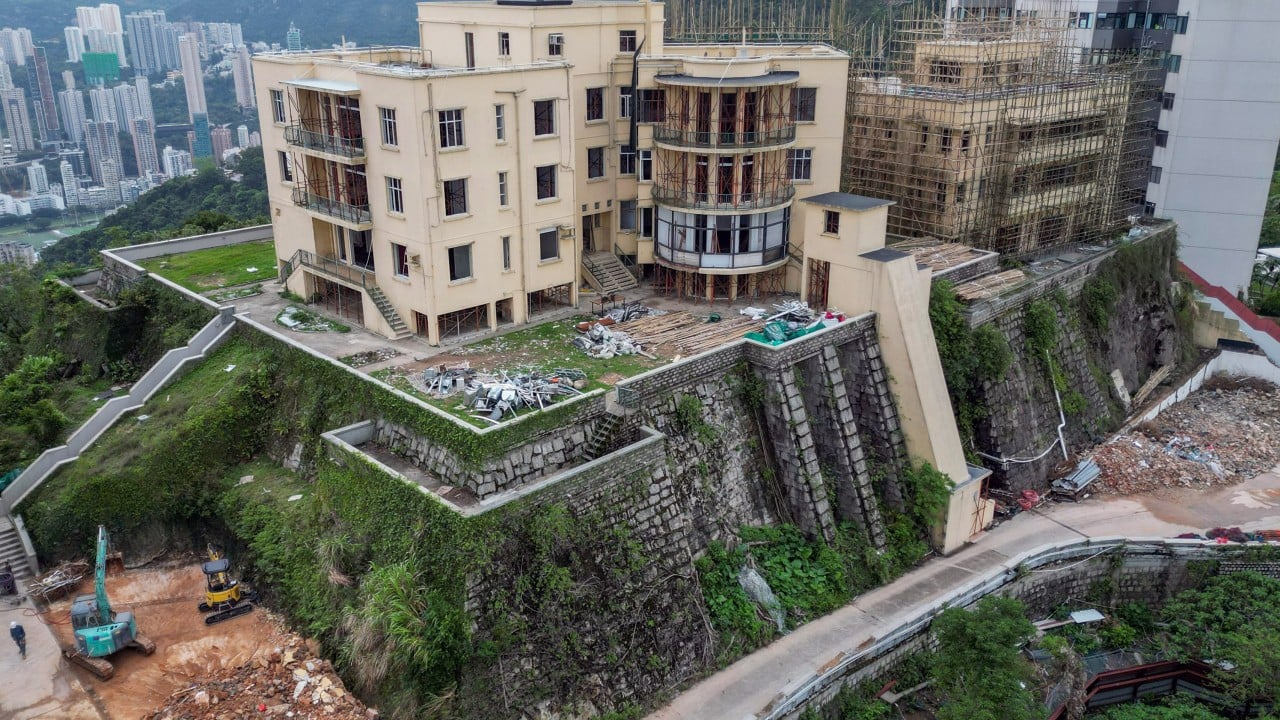Hong Kong orders archaeological review of former Japanese war memorial site amid construction, heritage preservation concerns
Hong Kong authorities have ordered a developer to conduct an archaeological assessment of its construction project atop a former Japanese war memorial site, amid mounting concerns of preserving the site’s heritage value.
Construction work was under way at decades-old, low-rise residential blocks Cameron Mansions on Magazine Road, with scaffolding erected and wrapping some buildings, according to drone images taken by the Post on Thursday.
Concerns about the potential demolition of residential blocks were initially raised by Empty City, a Facebook page focused on preserving Hong Kong’s heritage.
The Facebook post on Thursday flagged structures that were undergoing construction, but it was unclear at the time whether the base of the structure, which holds historical significance, would also be removed.
The Development Bureau said on Friday night in a statement that the base of the Japanese War Memorial left behind had archaeological research value, but was not a graded historic structure or an item subject that required grading.
However, it said authorities have requested those responsible for the construction works to conduct an archaeological impact assessment.
“[They shall] propose and obtain the Antiquities and Monuments Office’s agreement to the mitigation measures based on the results of the assessment, and to implement them to the satisfaction of the office,” the statement said.

The foundation was laid in 1942 by Lieutenant General Rensuke Isogai, with the Japanese War Memorial erected to commemorate the war heroes from the nation during the invasion of Hong Kong.
The memorial was demolished by the British colonial government in 1947 after the Japanese occupation ended in 1945.
From 1949 onwards, the site served as the foundation for Cameron Mansions, an upmarket residential development with 18 flats of around 2,000 sq ft according to a property agent.
The Post’s report of the demolition in 1947 said that it was widely believed that a sword was placed within the concrete foundation when it was laid below ground level, with the blade pointed towards Tokyo.
Hong Kong history blog WeToast said that the sword was cast in Hong Kong and was believed to be a talisman for the victory of the Japanese army.
Under the existing grading mechanism, the Antiquities and Monuments Office assesses the heritage value of historic buildings based on six criteria – historical interest, architectural merit, group value, social value and local interest, authenticity and rarity.
According to government records, the site was owned for decades by people with the last name Loke or Lok, believed to be the descendants of Malayan Chinese tin and rubber magnate Loke Yew.
The site was subsequently acquired by Cameron Investment Holding Limited.
Hong Kong to showcase heritage architectural models of Old Summer Palace
Hong Kong to showcase heritage architectural models of Old Summer Palace
It changed hands in February 2023 when the company directors Amanda Louise Kwai-lin Loke and others stepped down. The new directors are Kenneth Lau and Kin-sang Chan.
Stanley Lee Chak-yan, chairman of the Hong Kong History Study Circle, said the foundation is “worth preserving” because of the rarity of structures left from the three years and eight months during the Japanese occupation period.
But Lee added that he was not optimistic because it is privately owned.
“In Hong Kong, you can’t stop it from being demolished even if you file a court case because it is private property. The landlord could request compensation from the government for the lost opportunity of development if it is declared a monument,” he said.
He cited the example of the Ho Tung Gardens on The Peak, in which the owner objected to a 2011 government plan to turn it into a monument, Lee said.

He said whether the foundation of the Japanese War Memorial could be saved hinges on the determination of the government and the willingness of the landlord.
Asked if a structure that was once associated with the celebration of Japanese war heroes should be preserved given the wartime atrocities, Lee said he did not see any challenges.
“In my research, I came across this monument of the Former Site of the Puppet Manchukuo State Department in the northeastern city of Changchun on the mainland, which was built during the Japanese occupation and is now listed as a major historical and cultural site protected at the national level,” he said.
He said that these sites were used for national education on Japanese occupation and what they have left behind.
For the base of the structure of Cameron Mansions, Lee said there would be at most some plaques to tell visitors what had happened there if it could be kept.
Paul Barrett, a 68-year-old barrister, who lived in one of the Cameron flats for three years to 1994, said the residence was “full of fond memories”.
“There is nothing that can be compared with its view … the buildings are visible from Central and fit so well in the skyline,” he said.


